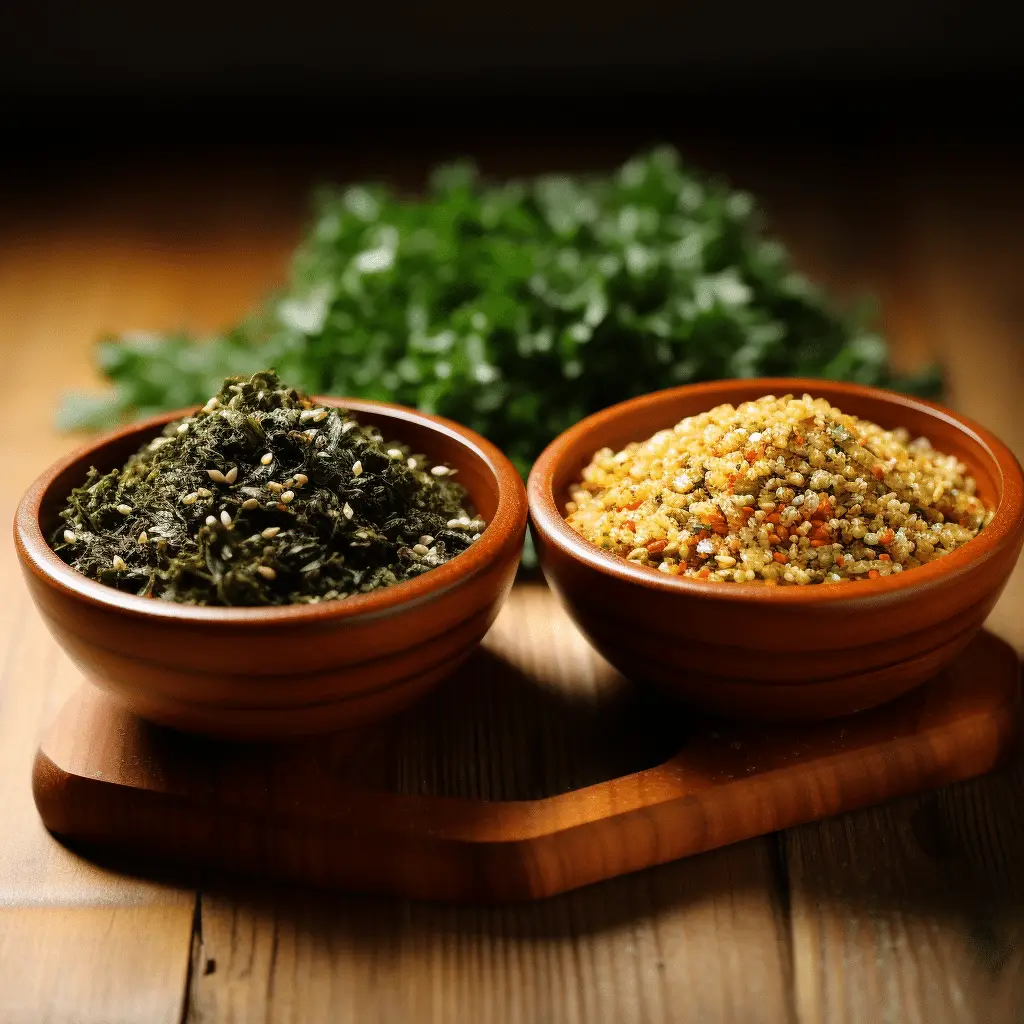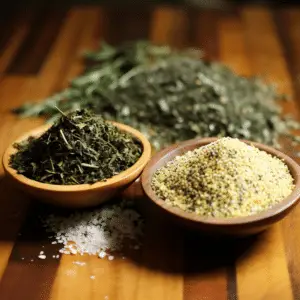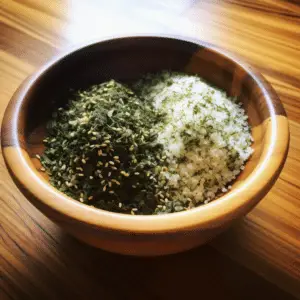
Furikake vs Togarashi: Japanese Condiment Showdown
Furikake and Togarashi are two popular condiments in Japan and beyond. They are typically used to season various foods, but they offer more than that. You can use them as toppings for sushi or sashimi,or also sprinkle them onto your rice or noodles to add more flavor and texture.

Furikake vs Togarashi: Overview
At their core, Furikake is made from dried seaweed, while Togarashi is made from chili peppers. Both have a unique flavor that makes them unique from one another. Some people prefer the sweeter taste of Furikake over the spicier Togarashi, while others prefer the savory taste of Togarashi over the sweet taste of Furikake. However, it all boils down to your taste and preferences.
This article will compare these two condiments and explain why you should choose one over the other based on your personal preference for each one.
What is Furikake?
Furikake is a Japanese condiment that is used to season and add flavor to many foods. Furikake can be made from a variety of ingredients, but it usually consists of sesame seeds, barley, kelp and salt.
The type of kelp used depends on what kind of furikake you are making – some contain wakame while others have nori or kombu. Wakame or kombu can be found in some grocery stores while nori may require an Asian market to purchase.
Furikake is traditionally sprinkled over rice to add flavor and color. However, furikake can also be used as a delicious seasoning for any type of food. For example, furikake can be used as a topping on fried eggs or as a garnish when serving sushi or other types of Japanese cuisine. Furikake can also be mixed with soy sauce or used in place of mayonnaise on sandwiches or hamburgers.
In Japan, furikake is usually sold in small packages at grocery stores or bulk sections of specialty shops. Grocery stores tend to carry more commonly available flavors like soy sauce and katsuobushi (dried bonito flakes).
Benefits of Furikake Seasoning
The benefits of Furikake seasoning are numerous, but perhaps the most important is its ability to increase the nutritional value and flavor profile of your food.
It contains iodine, which is essential for your body to function properly. It helps regulate blood pressure, thyroid hormones and the metabolism of carbohydrates, fats and proteins.
Similarly, it can help heal some common diseases like osteoporosis-bone weakness since it contains calcium, iron and magnesium.
And good thing, it has no MSG or preservatives. It is all natural, so you won’t find any artificial flavors or additives in it. You won’t get sick from eating this product, but you will get full from eating it!
What is Togarashi?
Togarashi is a spice blend that has been used in Japanese cooking for centuries. It is made up of a variety of spices including red pepper, white pepper and black pepper, as well as sesame seeds. Togarashi is very popular in Asia and can be found in many supermarkets throughout the continent.
It is often used in cooking as a garnish on dishes or as an ingredient in other dishes like miso soup or pickles. It also can be sprinkled onto rice just before serving to add flavor and piquancy to the dish without overpowering.
Similarly, it is used to season grilled meat, fish, and vegetables while also serving as a great addition to soups and stews.
Benefits of Togarashi
Togarashi has a number of health benefits and is rich in antioxidants, fibre and calcium. Let’s take a close look at them.
Antioxidant Properties
Togarashi contains antioxidants that help protect against free radical damage. Some studies have shown that this spice may have anti-inflammatory properties as well, but more research is needed to confirm this claim.
Fibre Content
Togarashi has high amounts of dietary fibre, which helps keep you fuller for longer after meals. This could help reduce your risk of developing diabetes or heart disease later in life! Fibre can also help you lose weight by keeping you feeling full for longer.
Calcium Content
Togarashi has calcium in it and helps build strong bones by increasing bone density and reducing osteoporosis risk factors such as osteopenia, osteoporosis and menopause symptoms.
Furikake vs Togarashi Comparison
There are a lot of different types of seasonings that you can use to add flavor to your meals. Some are easier to use than others, but they all have their own unique flavor profiles. Two popular types of seasonings in Japan are furikake and togarashi. Both are typically sprinkled on top of rice or used in other dishes like soups or stews.
Furikake and Togarashi are sometimes confused with each other, although they are two distinctively different spices. Furikake as mentioned above is a Japanese seasoning made from the dried and pounded sesame seeds, while Togarashi is a Japanese chili pepper. They both have similar flavors, but they are easily differentiated by their appearance, ingredients and uses.
Foremost, in ingredients, furikake is made from a mixture of rice and sesame seeds, while togarashi is made from Japanese dried red chili peppers. Furikake is traditionally used as a seasoning for dishes such as tempura or sushi while Togarashi is eaten as a condiment or sprinkled over food.
Additionally, on appearance, Furikake has a very light brown color and varies in texture depending on the ingredients used, while Togarashi has a much more intense color, consistency and is quite spicier than its counterpart.
The flavor of togarashi depends on how hot the chili pepper is before being ground into powder form. So if the chili pepper has been roasted, it will definitely have a strong aroma and vice versa.

Bottom Line
Long story short, Furikake makes a better standard addition than Togarashi and is probably the more versatile of the two. It is more likely to be used regularly. While Togarashi may have its place in Japanese cuisine as a spicy garnish, it simply will not get very far in Western dishes.
And with the rising popularity of Japanese inspired food outside of Japan. Having a go-to soy sauce alternative on hand can lead you to cook more often.